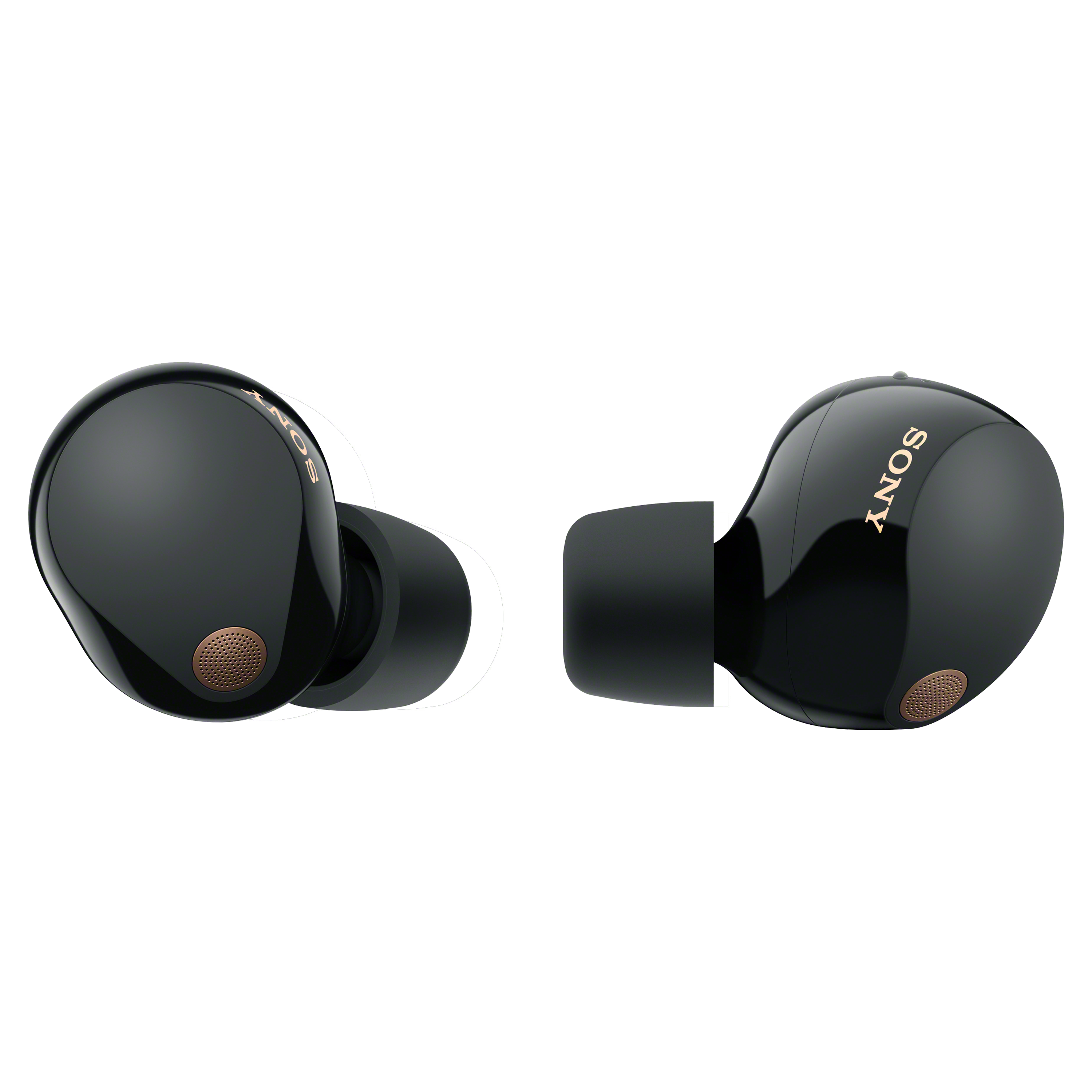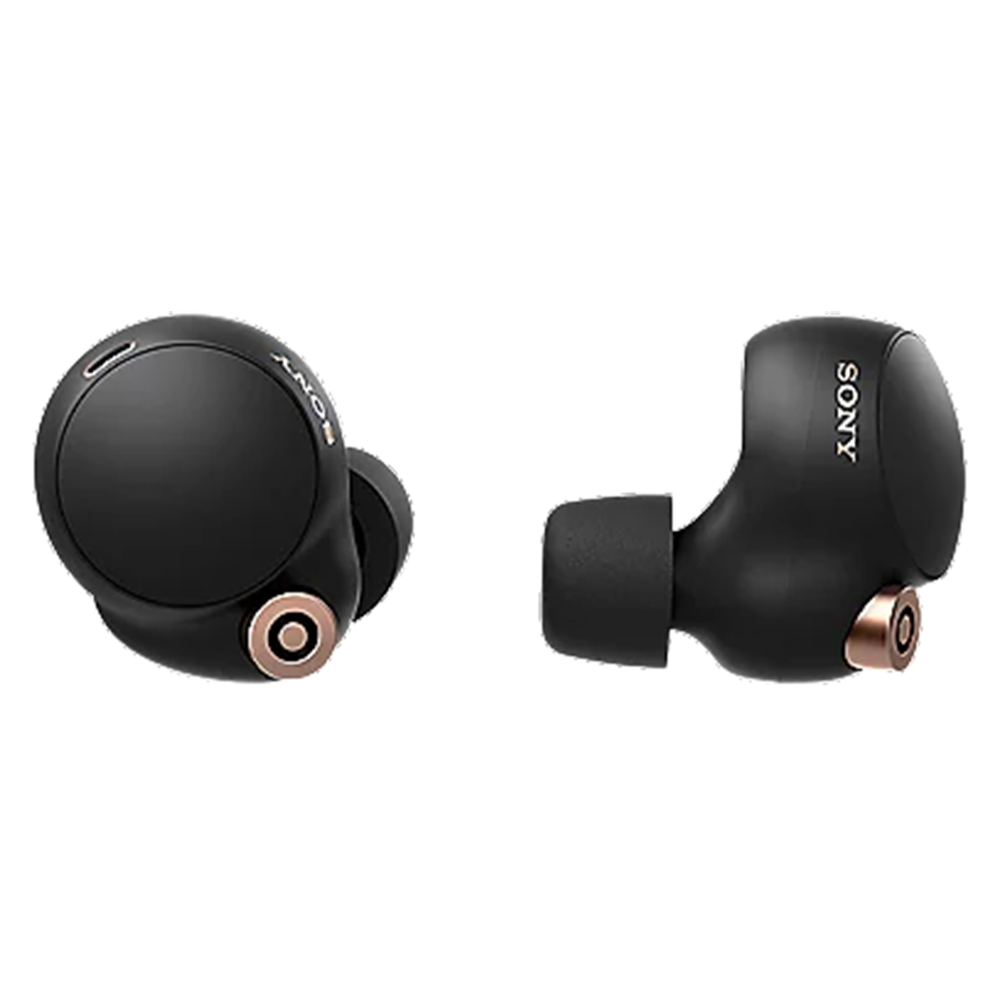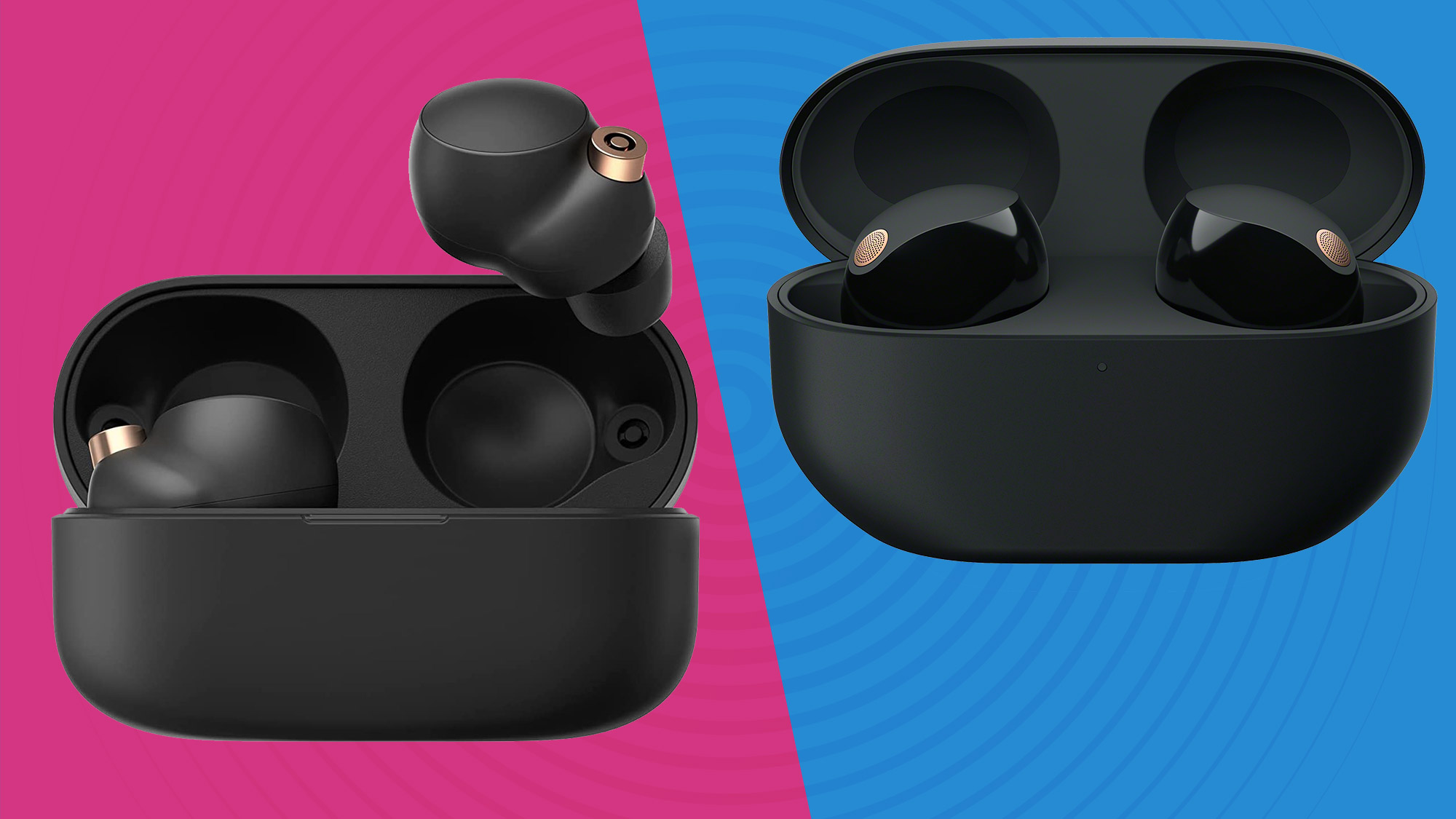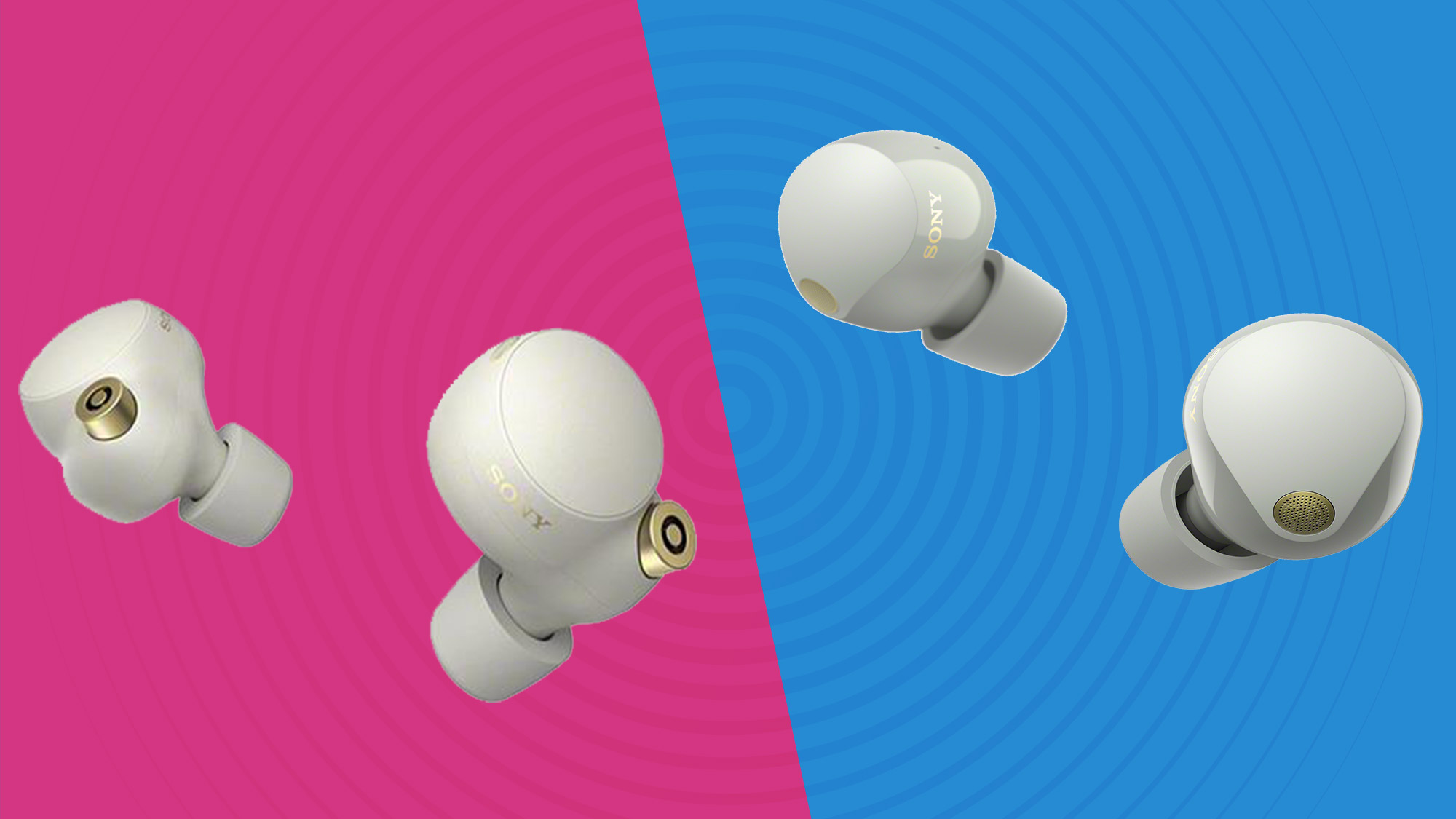Sony WF-1000XM5 vs Sony WF-1000XM4: Which earbuds are the best?
Now Sony has launched the WF-1000XM5, is it time to ditch the XM4?

Battery (buds): 8 hours
ANC: Yes
Spatial Audio: Yes
Water resistance: IPX4
Sony has thrown everything it can into these much smaller earbuds, and given us an extra set of foam tips so they fit perfectly. LDAC, the firm's top-tier DSEE upscaler, and Bluetooth 5.3 are all here, battery life is competitive, and the sound is 100% bona fide Sony quality.
However, for us, connectivity drop-outs, average ANC performance, and an app that looks a little busy at this flagship level add up.
Pros
- Agile, meaty and fun listen
- Very comfortable and secure earpieces
- Battery life maintained from XM4
Cons
- ANC can be beaten
- Occasional connectivity issues
- On-ear volume control is a tad hit and miss

Battery (buds): 8 hours
ANC: Yes
Spatial Audio: Yes
Water resistance: IPX4
The Sony WF-1000XM4 earbuds have long been our favorite true wireless earbuds. That's because they do a lot of things well, including play great quality sound and deliver decent ANC in a comfortable package.
In our review, we said that to beat these buds you'd have to get three other pairs – no other brand ticks as many boxes as these. However, now the new XM5s are here that may no longer be the case.
Pros
- Rapid, full-bodied and eloquent sound
- Impeccable ergonomics and some truly useful features
- Impressive call quality
Cons
- Unremarkable battery life
- B+ noise-cancelling
- Can take a few moments to position comfortably
The Sony WF-1000XM4 have been our favorite noise-cancelling earbuds for some time, topping our best true wireless earbuds list since they were released in 2021 and ranking high in every other guide about earbuds we’ve got.
What we’re saying is, they’re an excellent pair of earbuds. But now their successors, the Sony WF-1000XM5, have launched with smaller earpieces, extra mics and more, will they claim the top spot?
The Sony WF-1000XM5 buds are the latest true wireless earbuds from Sony and are due to be shipped in August 2023. They promise to update the XM4s in some significant ways, from a slimmer design to beefed up noise-cancellation.
And as luck would have it, our Sony WF-1000XM5 review is now live if you're considering investing. But if you already own the WF-1000XM4 and want to know whether to upgrade, keep reading.
In our guide below, we’ll put the two Sony earbuds head-to-head to find out definitively which is best, the Sony WF-1000XM5 vs Sony WF-1000XM4?
Sony WF-1000XM5 vs Sony WF-1000XM4: Price and release dates
The latest Sony WF-1000XM5 earbuds launched on July 24 and are set be shipped in early August. They cost $299 in the US, £259 in the UK and AU$499 in Australia.
This price makes sense considering the XM4s cost $279.99 / £250 / AU$449.95 when they first came out, on June 8 2021. However, these days you’ll find the Sony WF-1000XM4 earbuds for a little cheaper – when writing this guide we took a quick look at major retailers and found them for $219 in the US and £199 in the UK.
Sign up for breaking news, reviews, opinion, top tech deals, and more.
That means if you’re deciding between the two earbuds, you're likely to find the older and now superseded Sony WF-1000XM4s available for less – but that’s to be expected.
In terms of how these prices compare to the broader high-end true wireless earbuds market, they're similar to the competition. The Apple AirPods Pro 2 are currently available for $249 / £249 / AU$399 and you'll find the Bose QuietComfort Earbuds 2 for $299 / £279 / AU$429.

Sony WF-1000XM5 vs Sony WF-1000XM4: Features
One of the things that stands out the most with the Sony WF-1000XM5 earbuds is the promised noise cancellation upgrades. Sony claims these buds deliver “the best noise-cancelling performance on the market”.
What should make the ANC so good is a new mic array and 8.4mm driver unit that Sony is calling Dynamic Driver X. This enables the XM5 buds to deliver a range of improvements, including richer audio, clearer vocals and better levels of immersion. That's including a new Integrated Processor V2, an HD Noise Cancelling Processor QN2e and three mics per earbud, including dual feedback mics, which is expected to improve low-frequency cancellation performance.
In comparison, the XM4s have an older 6mm driver unit, one processor and only two mics per earbud for noise cancelation. The result is that the Sony's XM4s delivered good ANC, but never best-in-class. In our opinion, that award always went to the Bose QuietComfort Earbuds, and more recently the Bose QuietComfort Earbuds 2.
We already rated the great call quality with the XM4s. However, Sony says its new XM5 earbuds feature “Sony’s best ever call quality”. The improvements have been made with a noise reduction algorithm and improved bone conduction sensors. Sony says voices will be clearer, even in noisy environments, and wind noise will be reduced outside. Did we rate it? It's good, but the Technics EAH-AZ80 are able to beat it…
Some other notable features of the Sony XM5s include multi-point pairing to two devices (although not three), which did come to the XM4s after launch with an update.
Sony WF-1000XM5 vs Sony WF-1000XM4: Sound
We’ve always loved the audio performance of the XM4s. In our review, we said that they delivered "balanced, driving, poised and convincing sound". We also found that that they didn't let any details go unnoticed, or rhythms or tempos hang around.
Overall, the Sony WF-1000XM4 earbuds were a joy to listen to, delivering a smooth and controlled experience with what we defined as "vigor and enthusiasm" to their presentation.
But the XM5s bring multiple improvements. For example, Sony says the Dynamic Driver X unit will deliver "wide frequency reproduction, deep bass and clear vocals". And the newly developed HD Noise Cancelling Processor QN2e and Integrated Processor V2 brings 24-bit audio processing and high-performance analogue amplification that delivers "low distortion and crystal-clear audio reproduction".
Sony packs in both Spatial Audio and high-res audio support with LDAC and DSEE Extreme upscaling digital music in real-time with both the XM5s and XM4s.
The good news is that sonically, the WF-1000XM5 are very worthy of their rich heritage. Are they better than the XM4s though? The bass is snappy and agile, but WF-1000XM5's overall the sound is ultimately equal to, rather than better than, their older siblings.

Sony WF-1000XM5 vs Sony WF-1000XM4: Design
The XM5s have a similar look and feel to the XM4s, but as with the beefed up ANC claims and promised audio quality, there are some solid design changes worth shouting about.
Firstly, there's a new, glossy texture that makes them a little nicer to wear than the previous finish. But most important, the XM5s are also 25% smaller and approximately 20% lighter (around 5.84g per bud) than the XM4s. In our books, that's a pretty significant difference considering we were already happy with the weight and fit of the XM4s.
One of the most interesting design changes is that the ear tips come in four sizes, including what Sony calls an “ultra-small” SS model for smaller ears. This is good news for anyone with small ear canals who may have struggled to find true wireless buds to fit in the past.
In our review, of the older model, we did say that the XM4s took longer than they should to insert, and we can tell you that this is no longer the case with the new model – in fact, if you have especially large ears you may even find the new unique polyurethane tips and the driver housing a little too small. But again, you'd have to have a fairly large ear to experience this issue.
Sony WF-1000XM5 vs Sony WF-1000XM4: Battery
There's not much to say about battery life. The Sony WF-1000XM5 buds have the same eight-hour battery life as the XM4s with an additional two charges from the case. It’s a shame there's no change here, but then again if you consider the improved tech under the hood it does make some sense.
In terms of how both buds compare to the competition, eight hours is pretty standard. They outshine the Bose QuietComfort earbuds 2, which only boast six hours, and are only bested by a few hours if you take a look at some mid-range options, like the JBL Live Pro 2, which last 10 hours.

Sony WF-1000XM5 vs Sony WF-1000XM4: Verdict
There’s no question that the upgraded Sony XM5s are the better pair of earbuds on paper. But of course, that's only half the story.
Music purists will be glad there are promised upgrades to audio quality and ANC, making these one of the best-sounding pairs of buds out there – again, on the spec sheet. Sadly, in the flesh we experienced a few snafus with the connectivity and felt that while the sound quality was very very good with the Sony WF-1000XM5, the ANC and call quality can be bettered by competitors in 2023 for the same money.
If you already own a pair of the XM4s, or you’ve found a pair on offer, they’re still well worth your time. They may be older, but there’s nothing old or past it about the XM4s. Not at all.

Becca is a contributor to TechRadar, a freelance journalist and author. She’s been writing about consumer tech and popular science for more than ten years, covering all kinds of topics, including why robots have eyes and whether we’ll experience the overview effect one day. She’s particularly interested in VR/AR, wearables, digital health, space tech and chatting to experts and academics about the future. She’s contributed to TechRadar, T3, Wired, New Scientist, The Guardian, Inverse and many more. Her first book, Screen Time, came out in January 2021 with Bonnier Books. She loves science-fiction, brutalist architecture, and spending too much time floating through space in virtual reality.